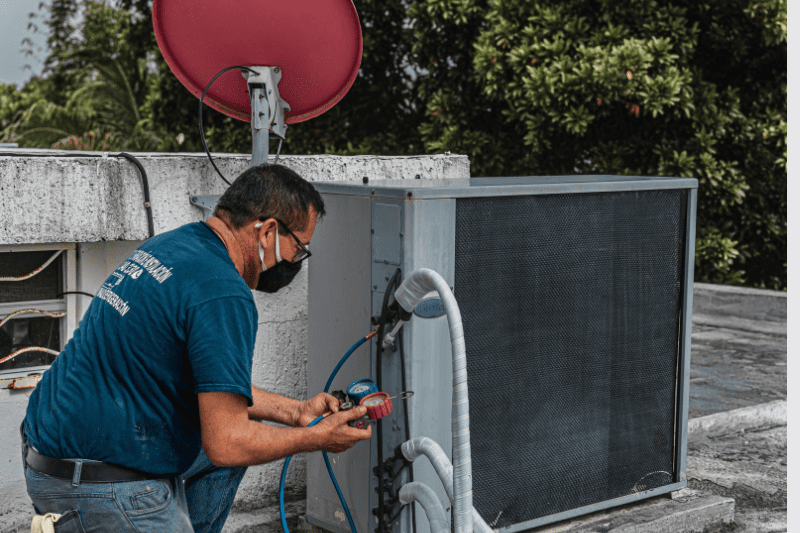Overview
- Understanding First-Time Fix Rate
- Calculating First-Time Fix Rate in Field Service Management
- Significance of a High First-Time Fix Rate for Field Service Businesses
- Key Areas of Focus in the Field Service Industry
- Strategies to Increase First-Time Fix Rate in Field Service Management
In the field service industry, a critical metric known as the First-Time Fix Rate (FTFR) serves as a key indicator of success. It measures how effectively service professionals resolve issues during their initial visit, and achieving a high FTFR is crucial for maintaining customer satisfaction and operational efficiency. This guide offers a comprehensive exploration of FTFR, covering its calculation, importance, and actionable strategies to enhance it.
Understanding First-Time Fix Rate
The First-Time Fix Rate (FTFR) represents the percentage of service issues that are resolved during the first visit, eliminating the need for a return trip. In field service, a high FTFR indicates that the team is efficient and well-prepared, ensuring minimal disruption for customers. It is a crucial performance metric that reflects the effectiveness of service teams in addressing issues promptly.
Calculating First-Time Fix Rate in Field Service Management
Calculating FTFR is a straightforward process: divide the number of service requests resolved on the first visit by the total number of service requests completed, then multiply by 100 to get a percentage. This metric provides valuable insights into the team’s ability to resolve issues efficiently. Analyzing FTFR across different tasks or overall operations allows businesses to identify improvement areas and target their efforts more effectively.
Significance of a High First-Time Fix Rate for Field Service Businesses
A high FTFR is essential for several reasons. It directly correlates with enhanced customer satisfaction, as clients appreciate quick and effective solutions. Additionally, a high FTFR reduces operational costs by minimizing the need for repeat visits, saving both time and resources. It also strengthens the company’s reputation, positioning it as a reliable service provider in a competitive market.
Key Areas of Focus in the Field Service Industry
To achieve and maintain a high FTFR, field service businesses should concentrate on:
- Customer-Centric Approach: Address customer concerns promptly and effectively to ensure satisfaction.
- Operational Efficiency: Streamline processes to enable quick response times and effective service delivery.
- Skilled Workforce: Invest in training and development to ensure technicians are well-equipped to handle a variety of service scenarios.
Strategies to Increase First-Time Fix Rate in Field Service Management
Optimize Inventory and Spare Parts Management
Effective inventory management is crucial for ensuring technicians have the necessary parts available to complete repairs on the first visit. Implementing a robust inventory tracking system helps maintain optimal stock levels and reduces delays caused by the unavailability of parts. Regularly reviewing and updating inventory ensures that technicians are always equipped to handle diverse service scenarios, thereby contributing to a higher FTFR.
Guarantee Access to Job Sites
Timely access to job sites is vital for achieving a high FTFR. Collaborate closely with clients to address any logistical challenges, such as obtaining necessary permissions or coordinating site access, well in advance. This proactive approach minimizes delays and ensures that technicians can begin work immediately upon arrival, increasing the likelihood of resolving issues on the first visit.
Strategically Assign Skilled Workers
Assigning the right technicians to specific jobs is critical for improving FTFR. By carefully considering each technician’s skills, experience, and expertise, businesses can ensure that the most qualified individuals are dispatched for each task. This strategic alignment enhances the chances of a successful first-time fix and improves overall service quality.
Enhance Job Planning Processes
Effective job planning goes beyond merely scheduling appointments; it involves providing technicians with all the necessary information before they arrive on-site. By streamlining job planning processes and ensuring that technicians have access to comprehensive details about the issue, customer history, and relevant documentation, businesses can reduce diagnosis time and increase the likelihood of a first-time fix.
Improve Communication
Clear and efficient communication between dispatchers, technicians, and customers is crucial for achieving a high FTFR. Implementing robust communication channels ensures that technicians receive timely updates and instructions, reducing the risk of miscommunication. By fostering a culture of open communication, businesses can improve coordination, enhance service delivery, and ultimately increase their FTFR.
The First-Time Fix Rate is a vital metric that reflects a field service management business’s efficiency and commitment to customer satisfaction. Achieving and maintaining a high FTFR requires a strategic approach that includes optimizing inventory management, ensuring timely access to job sites, strategically assigning skilled technicians, and improving communication. By focusing on these areas and implementing the strategies outlined in this guide, businesses can improve their FTFR, leading to better service delivery, increased customer loyalty, and greater operational success.










